Visiting and Climbing the Washington Monument in 2025: Everything You Need to Know
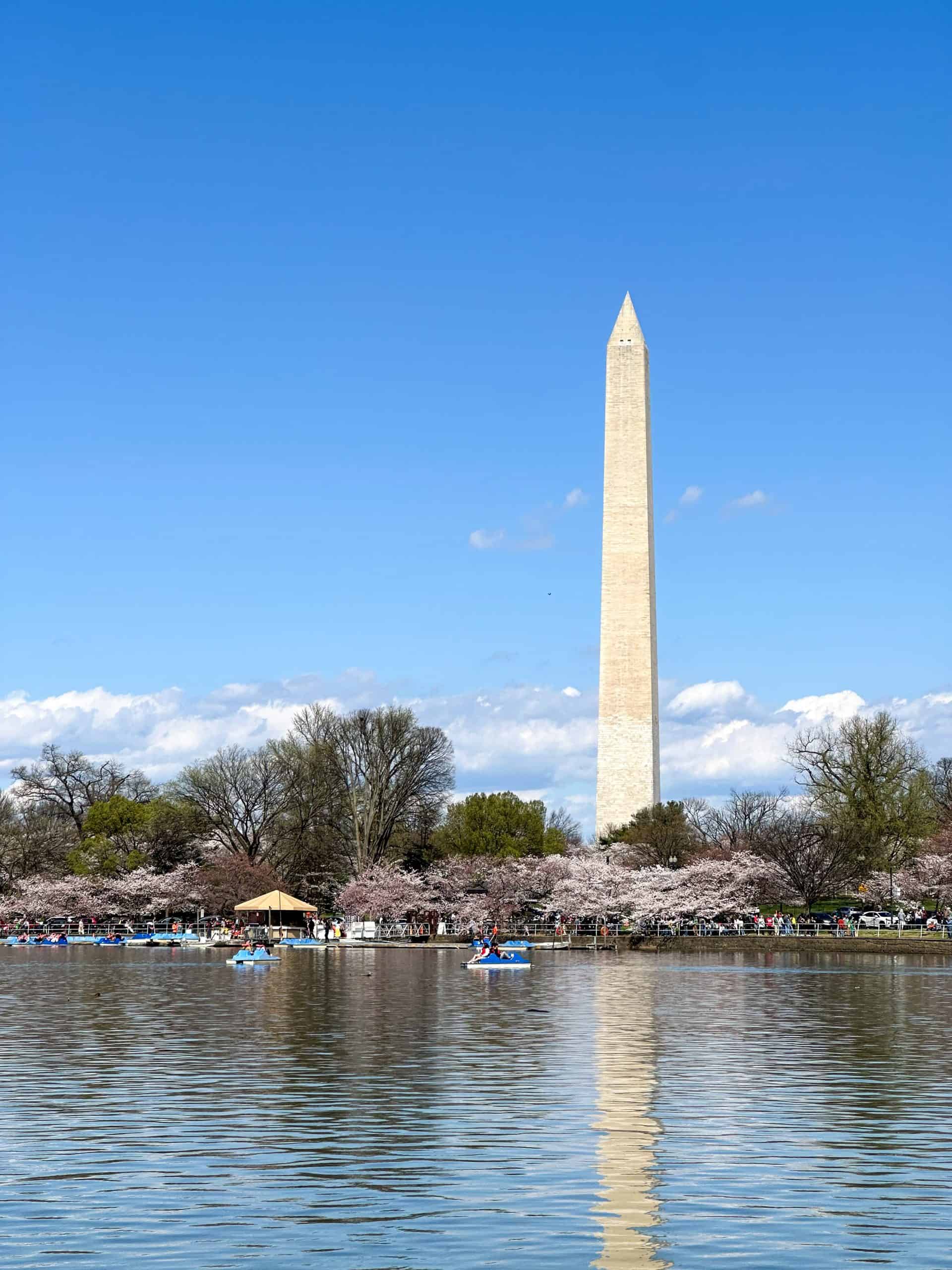
Many want to try visiting and climbing the Washington Monument. Standing tall through the skyline of Washington, DC, it gives the best views of DC with a 360-view. Created as a structure to honor George Washington, the Washington Monument has been an iconic landmark rich in American history since it was first opened to the public in 1888.
Some have seen the iconic obelisk mostly through blockbuster films like Spider Man, while others have been in DC all their life but haven’t had the chance to climb up the Washington Monument themselves. Like many DC attractions, you can’t get to the top of the Washington Monument without a ticket.
If you’re planning to go up to the Washington Monument, this guide fills you in with everything you need to know about ticket reservations, security protocols, tricks in securing a ticket, and alternatives if you don’t get a slot.
Photos by Valerie Moore, unless otherwise noted.
Table of Contents
Overview of The Washington Monument
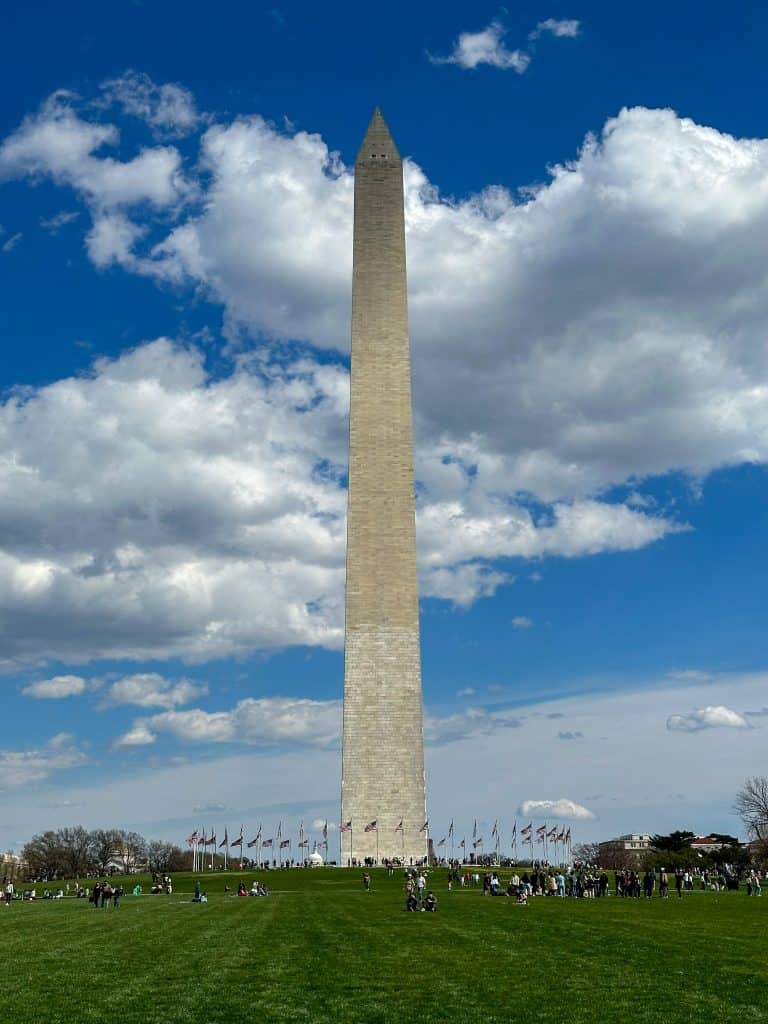
Located on the National Mall at 15th Street NW, the Washington Monument is 100 feet taller than the Great Pyramid of Giza and the tallest obelisk in the world. It was built as a proper memorial for the first President George Washington after he died in 1799 which took 37 years to complete in 1884.
Meaning and Symbolism of the Washington Monument
No one is buried in the Washington Monument, but its cornerstone was buried along many historical copies like the Constitution, Declaration of Independence, an old DC map, and a portrait of George Washington. As for its main purpose, its tall structure designed by Robert Mills is a tribute to the leadership of George Washington as a founding father.
When it was completed in 1884, it symbolized George Washington’s contributions to the founding of the United States, and being able to withstand the firsts in American history: ”First in War, First in Peace, and First in the hearts of his countrymen.”
The Washington National Monument Society, formed in 1833 to fund its construction, wanted its structure to be “unparalleled in the world” and wanted the design of an Egyptian-style obelisk circled by thirty 100-foot columns. But lack of funding and Civil War disruptions slowed down its construction, eventually leading to a minimalist-style ancient Egyptian design, with clean lines of stone and marble.
Constructed entirely of stone, with no mortar to hold its marble blocks together, the stone obelisk suffered severe cracks during a massive 5.8-magnitude earthquake on August 23, 2011. The damage was so serious that visitors could see daylight from the inside, and during Hurricane Irene, water even entered the monument.
From 2012 to 2013, the Washington Monument was closed for repairs on both interior and exterior. Some of its original stone fragments were removed because of damage and some loose pieces were preserved with drilled anchors. To prevent further cracks, cracked panels were sealed, and mortar joints were repointed with a reinstalled lightning protection system.
The monument successfully stabilized after almost 3 years of repairs and reopened to the public in May 2014. However, it was closed again in 2016 for elevator upgrades, screening facility replacement, and soil contamination repairs before fully reopening to the public in 2019.
How Big is the Washington Monument?
The Washington Monument is a historical proof of the 19th century’s engineering and architecture, the tallest stone obelisk in the world. It towers over the National Mall at 555 feet and 5 1/8 inches or 169.29 meters with a base of 55 feet on each side, but it has already sunk to 2.2 inches underwater since it was partially built on reclaimed land.
As tall and strong as it looks, the structures of the Washington Monument are all stones: marble, granite, and bluestone gneiss blocks. The most interesting part is that there’s no mortar keeping the 36,491 stones together. Only gravity and friction are holding up the giant tower.
While you won’t see the capstone from inside the Washington Monument, it’s worth knowing that it acts as a lightning rod against thunderstorms. The capstone is a 9-inch aluminum pyramid worth $225, but it was a very rare (and expensive) material back in 1884 when it was placed.
A Brief History of the Washington Monument
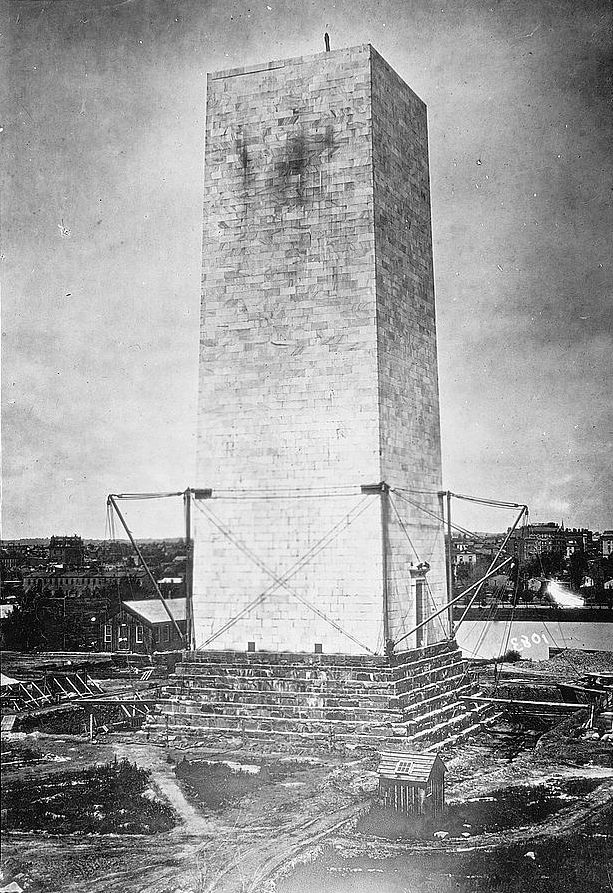
- 1848: Construction on the Washington Monument begins
- 1884: The Washington Monument was completed
- 1886: An iron staircase was built and opened to the public
- 1887: Closed to avoid vandalism
- 1888: Reopened with a steam-powered public elevator that takes 10-12 minutes before visitors reach the top
- 1901: Old elevator was replaced with an electric elevator for faster transport
- 1933: The National Park Service took over maintenance
- 1934: The first repair was done as part of a public works project during the Great Depression
- 2011-2014: A three-year closure to repair cracks from a 5.8 magnitude earthquake
- 2016-2019: New security facility and a modernized elevator after a three-year renovation project with a new control system and mechanical parts
Can You Climb the Washington Monument?
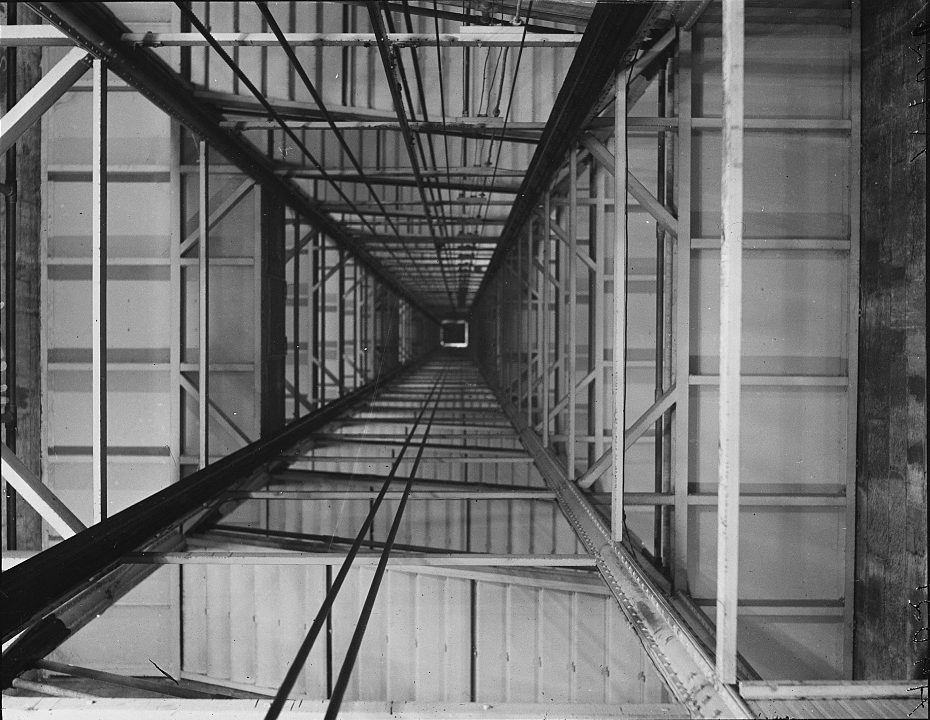
Many people want to try climbing the Washington Monument to experience the way it used to be in the late 1800s: climbing the 896 steps and being able to see each of the commemorative stones from bottom to top. Back then, visitors had the option to either climb the Washington Monument or take the steam-powered elevator to the top.
However, the National Park Service closed the stairs in 1976 due to vandalism and horseplay, not to mention the heart attacks from the strenuous climb up the Washington Monument. At first, only the stairs walking up were closed in 1971, then closed altogether (up and down) in 1976. Today, the only way up is the elevator.
As you go inside the Washington Monument in the ground floor lobby, you’ll see a statue of George Washington and an elevator to take you up to the observation deck in 70 seconds. Once you step out, you’ll see large windows on all four sides of the room showing the best breathtaking views of DC.
After taking in the scenery, visitors climb down through the elevator and slowly descend one level to the 490-foot mark, where a small museum can be seen. Then, they ride another elevator down for 70 seconds to reach the lobby.
How Many Steps Are in the Washington Monument?
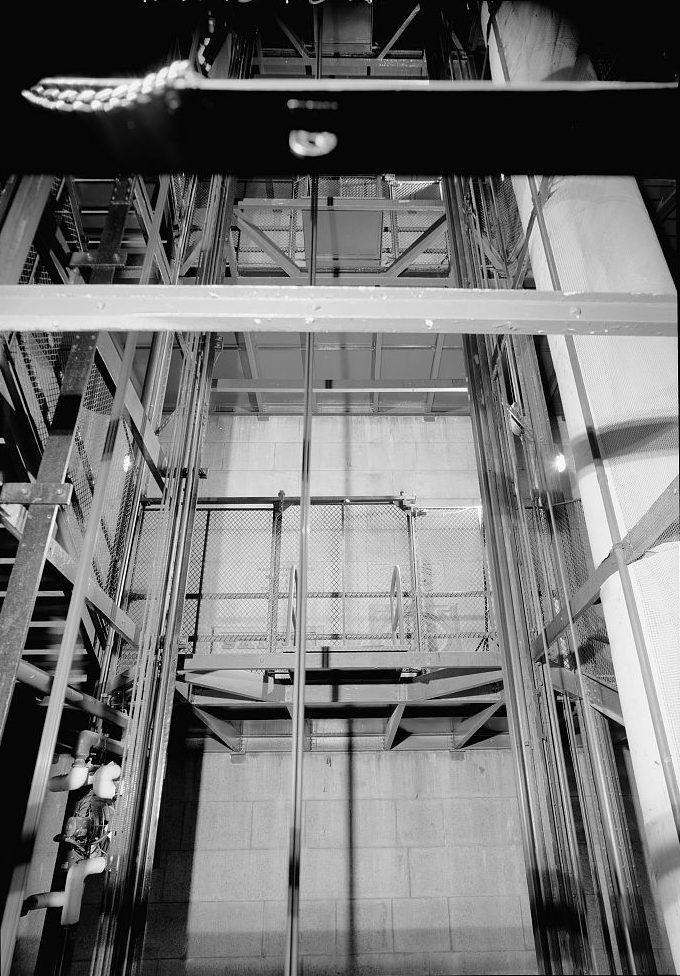
Visitors had to climb 896 steps to reach the top of the Washington Monument because this was the main way to reach the top in its early years. While a steam-powered elevator was available in the 1880s, people still chose to climb the stairs to enjoy the experience or because of their fear of the new elevator technology. Initially, if a rider became scared, the elevator had to be turned around–which happened more due to the fear of men than women.
Many have succeeded in climbing up even though it’s exhausting. In the six months after its dedication, 10,041 visitors climbed the stairs. Along the way, they could admire 193 commemorative stones embedded in its interior walls that states, cities, and even foreign countries gifted to help fund the monument’s construction.
The stairway remains closed today and the National Park Service currently has no intention of opening it again. But you can partially see it during the elevator ride, as well as the commemorative stones visible through its small windows.
Can You Still Walk Up the Stairs in the Washington Monument?
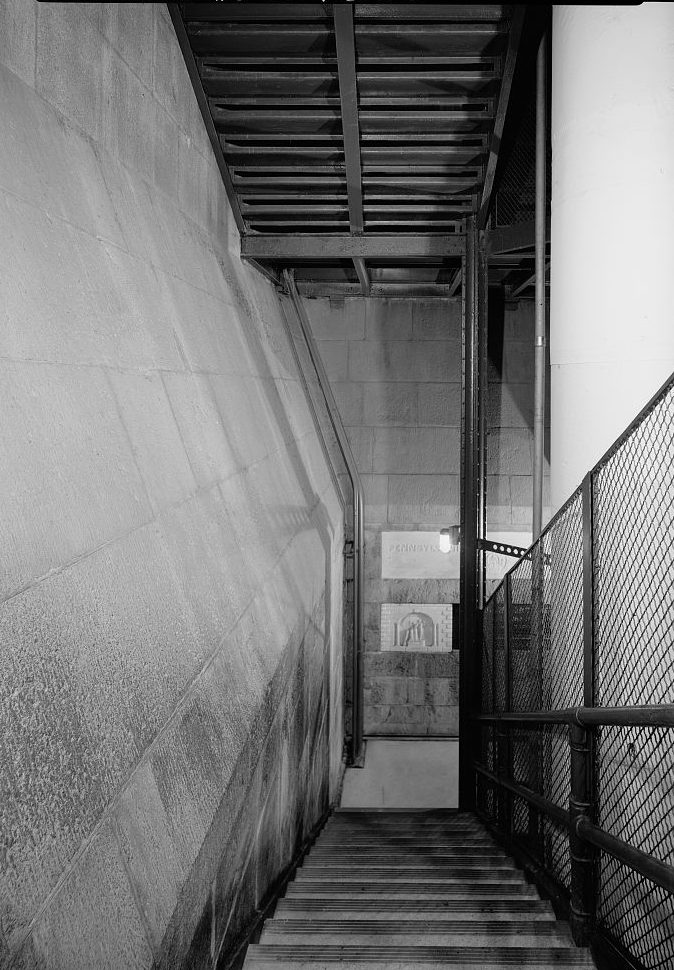
While the stairs are not open to the public, there were some more recent instances where people had to use them like elevator door repairs and operational breakdowns. These are only rare instances where visitors have had no choice but to walk down all 896 steps.
For instance, in 2016, there was an elevator malfunction where 63 people were left stranded inside and at the top of the Washington Monument. Elevator doors refused to close, so they had to walk the entire 555 feet down.
There was also this incident in 2019 when the elevator had mechanical failures. This time, no one was inside the elevator and 40 visitors had to climb down again by foot. This happened after the elevator was newly renovated with a $15 million upgrade.
It’s ironic how climbing the Washington Monument is a dream for some, but an emergency for others. For some of them, they might have seen it as a rare opportunity to experience the monument the way early visitors did, though probably not one they would have chosen voluntarily.
Visiting the Washington Monument Today
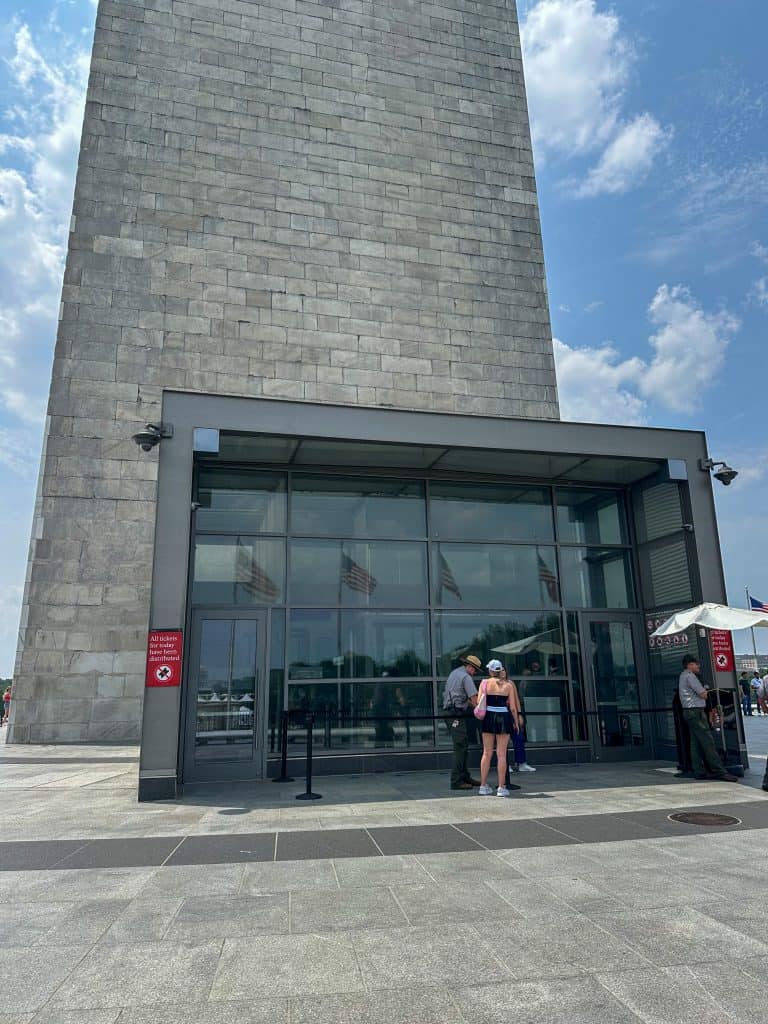
To make the most of the best views, it’s worth bringing a zoom lens to photograph the city’s close-up details (don’t use flash through the glass windows). If the weather permits, visiting the Washington Monument in the early morning before haze sets in gets you the clearest views of DC.
It is beautiful during the sunset, but Washington Monument tour times are only until 5 PM, making the sunset only visible in the winter months when the days are short. On the brighter side, visiting in late afternoon is a good time to avoid the crowds during peak season.
You can stay at the top for as long as you want, but most last for about 20 minutes as there is not much to do at the top aside from taking in the scenery. Not to mention, they keep bringing groups up so you may feel rushed to keep moving.
Washington Monument Observation Deck
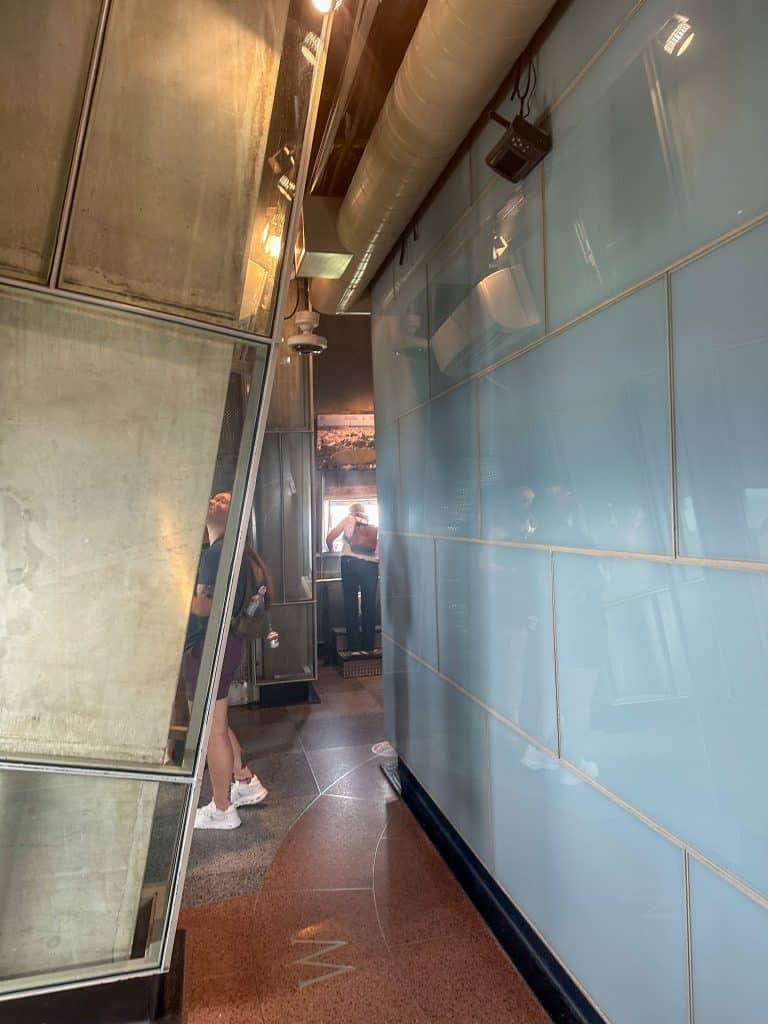
The tour will be self-guided and in a top-down approach. At the Washington Monument observation deck, you’ll see a panorama view of the National Mall, the White House, the US Capitol, and even parts of Maryland and Virginia.
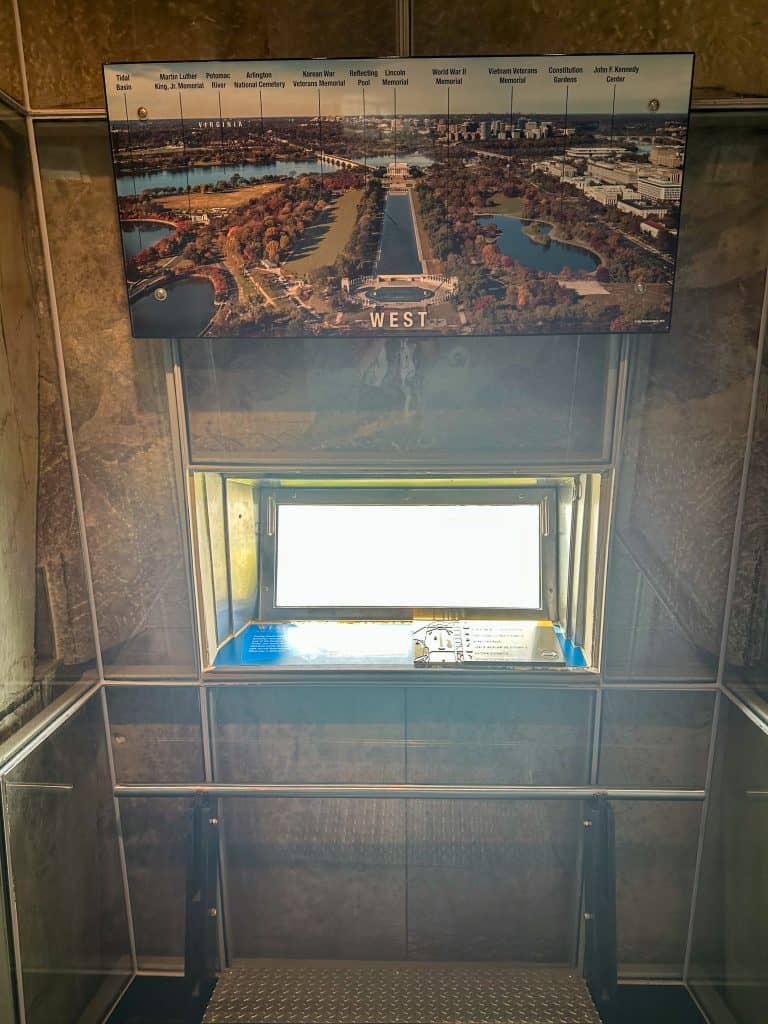
Washington Monument’s windows are small, but enough to get a nice view of everything. The best views are the west side where you can see the Lincoln Memorial and the reflecting pool, and the east side where you can see the National Mall.
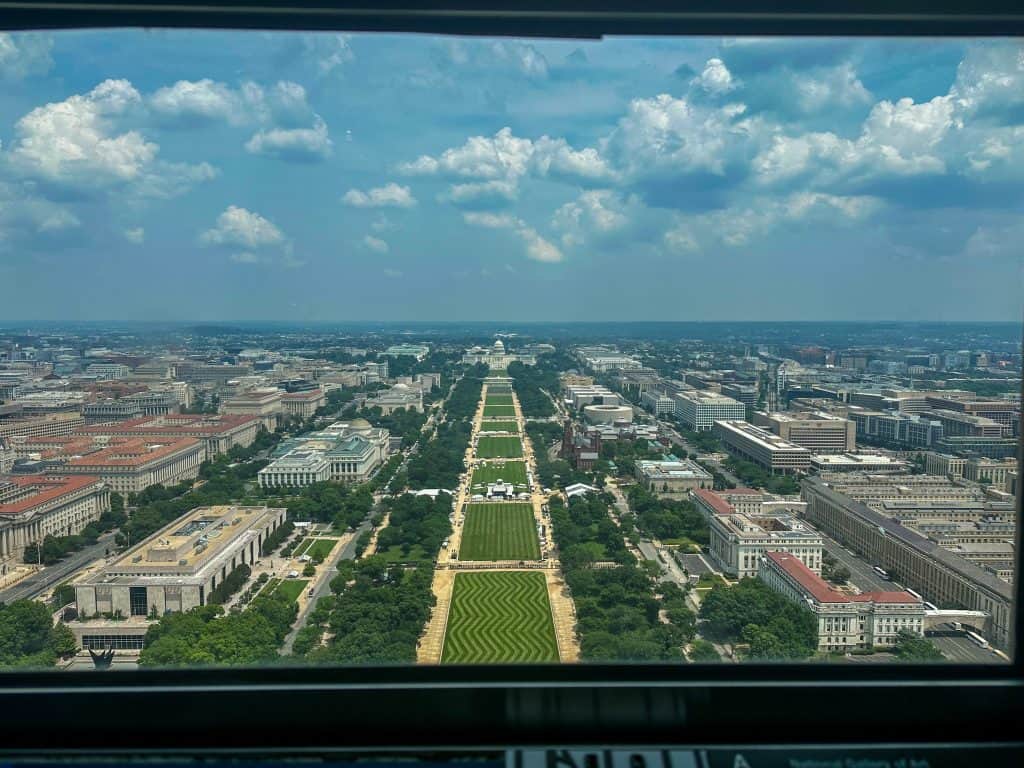
From the observation deck, you can see the White House and National Cathedral looking north; the Anacostia River, National Arboretum, US Capitol, and Nationals Park looking east; the Potomac River, World War II Memorial, and Lincoln Memorial looking west; the Tidal Basin, Thomas Jefferson Memorial, Reagan Airport, and the Pentagon looking South.
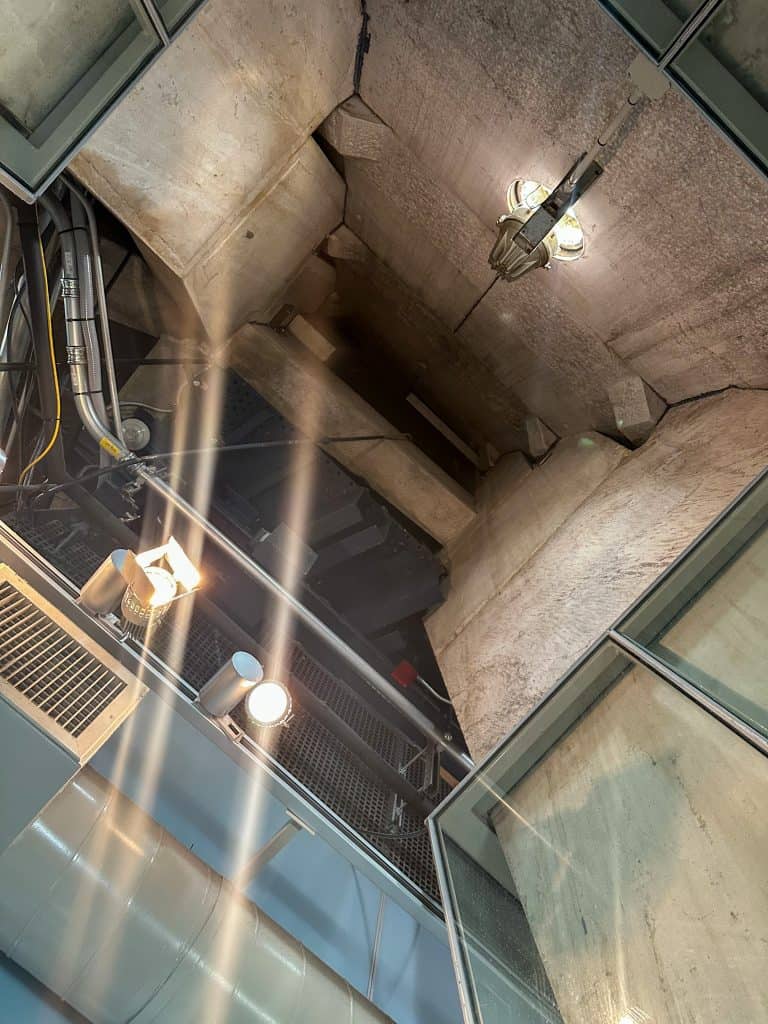
If you look up the observation deck ceiling, there’s a blinking red light used to signal airplanes letting them know where the monument is during nighttime. The light looks big up close when you’re inside the deck, but looks like a blinking dot when you look at it from outside.
Washington Monument Elevator Ride
There is only one elevator inside the Washington Monument, but it is fairly large even if they bring in people in groups of 15 (something to note if you’re claustrophobic). While years ago you would have had a park ranger in the elevator talking about the monument, now there is a pre-recorded video guide.
Going up the Washington Monument through the elevator is fully accessible for people with different disability types. Park rangers will be there to assist their entrance to the elevator. For physical disabilities, visitors can loan a wheelchair for free, but there’s only one available so it’s first-come-first-serve.
After the observation deck, visitors will walk down the stairs to the level below the observation deck to the small museum. If you are unable to walk down stairs due to mobility issues, you’ll be able to take the elevator.
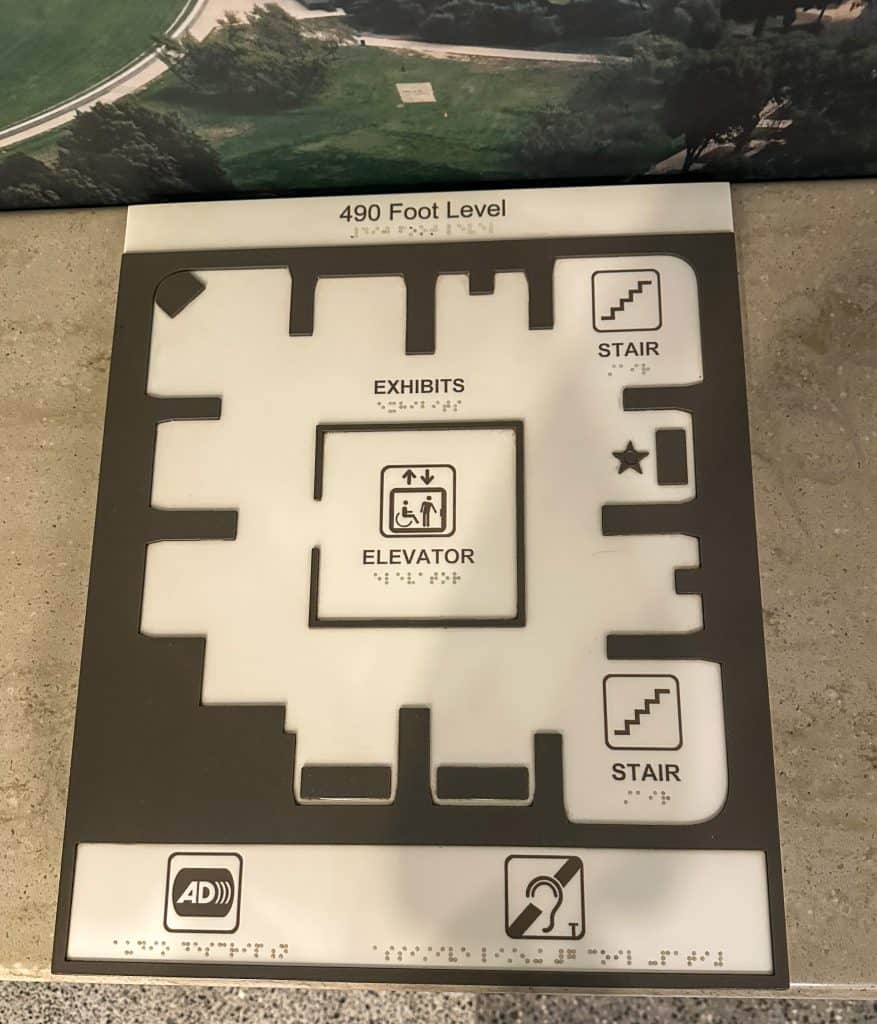
The small room is the exhibit hall. From the outside, you can see it’s located below the pyramid structure. It has no windows (and no view), but you can see historic photos of views from the monument, learn the history of the monument, see casts of some of the commemorative stones, and learn more about the life of George Washington. From there, you will take the elevator down.
The feature of the ride down is the stones carved on the Washington Monument interiors. While the ride down only takes 70 seconds, it’s worth looking over the elevator glass panels to see some parts of the interior’s stairwell and embedded stones.
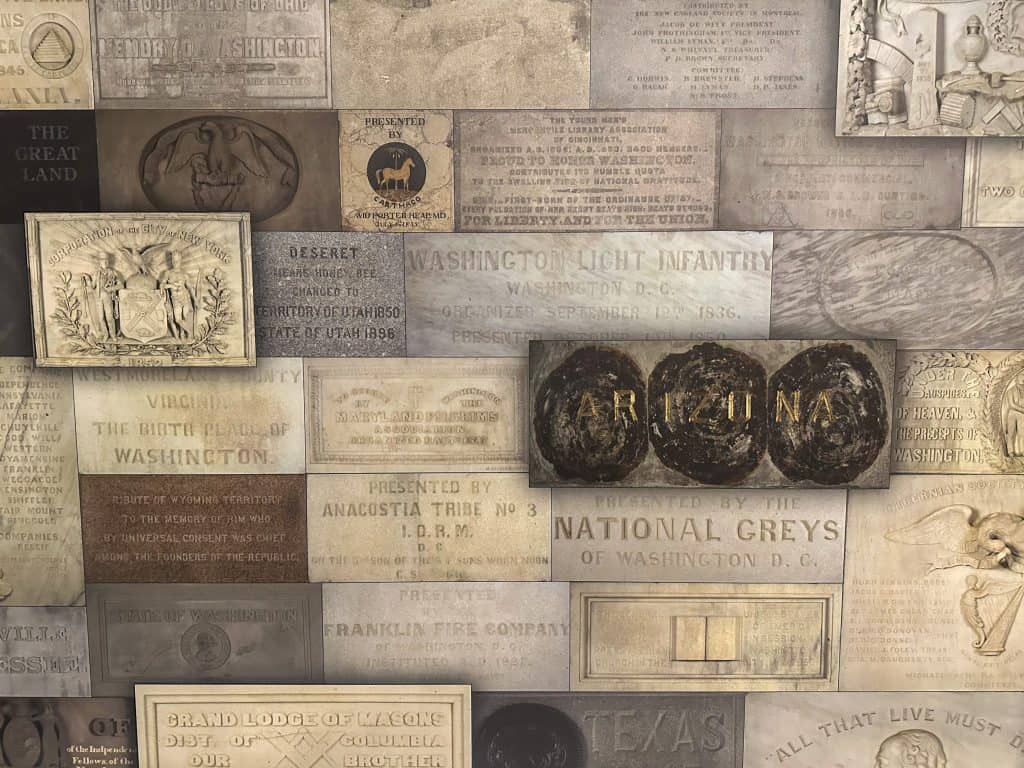
The elevator will slow down and lights will turn off for visitors to see the stones, so make the most of your elevator ride down to the lobby. (Editor’s note: when I last took the tour in June 2025, the windows were broken and though the elevator slowed, I couldn’t see the stones the windows.)
Visitors with hearing disabilities can email the Park Service at least three weeks before visit to request ASL interpretation for free. The Washington Monument brochure has a braille version, as well as each window area on the observation deck.
Planning Your Visit to the Washington Monument
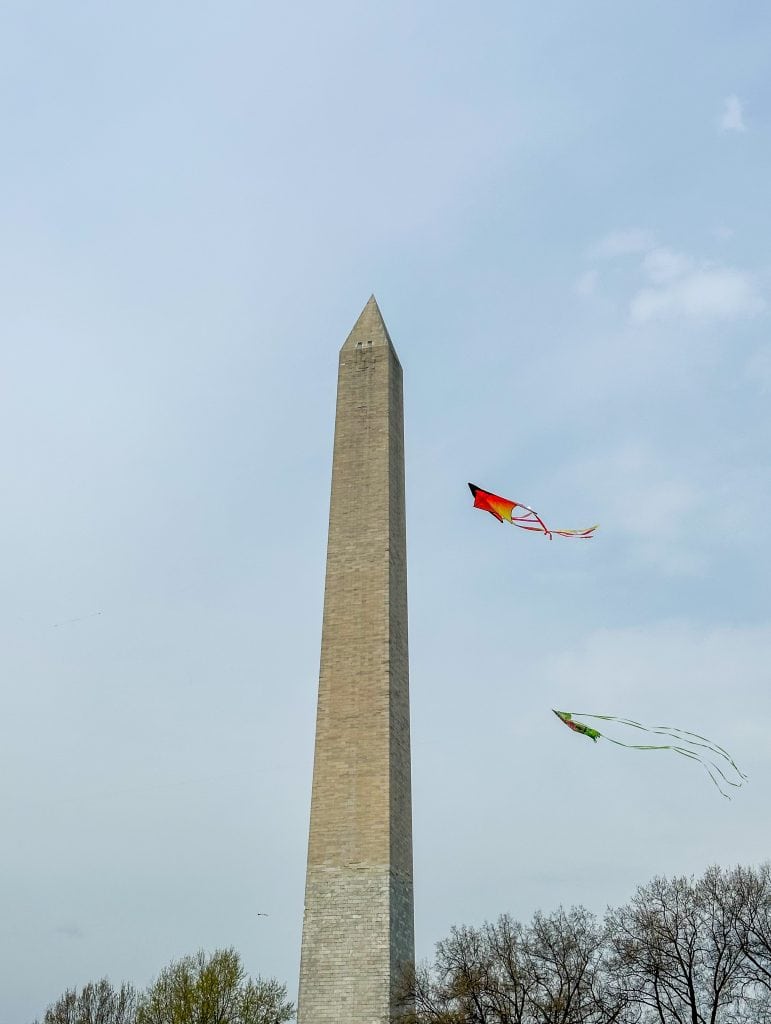
You can expect two main things when planning your visit to the Washington Monument: the views are stunning, and tickets sell out in a minute (sometimes even seconds). For a better experience in planning your visit, here’s everything you need to know about securing tickets, fees, onsite passes, tour times, and transportation options.
Washington Monument Tickets and Pricing
The Washington Monument is one of the DC sights that require tickets. There are two ways to get tickets: onsite or online. Onsite tickets must be booked for same-day only, so you can’t reserve one in advance. Online tickets can be reserved with a nonrefundable $1 service fee per ticket, but Washington Monument tickets themselves are free.
For online reservations, you have two ways to request tickets: request for next-day tickets (available at 10 AM Eastern Time daily) or request 30 days in advance. Onsite tickets run out quickly during peak season, so online reservations are ideal.
However, you have to be fast and competitive because it’s highly likely that individual tickets sell out in seconds. It’s very difficult to get online tickets because of the demand, and you should plan to be flexible on your day and timing.
Understanding the Washington Monument Tickets Website
Washington Monument tickets are available via recreation.gov. You may find some tickets for sale on tour websites, but those are through 3rd party vendors and will be more expensive.

On the ticket website, most people will want to select the Washington Monument Tour option. If you have a large group, you’ll want to select the Washington Monument Large Group Tour.

On the page to reserve tickets, you’ll need to select the date. This date picker can be a bit confusing.
On dates where there is an S, that means that all tickets for that date are sold out. You will not be able to click on these dates.
If the date has passed or tickets are unavailable for that day (for example, if the area around the monument is closed for security reasons due to an event), it will be shown as a gray box with no letters
If it’s yellow with NR, that means that there will be some tickets available, but they have not yet been released. Remember that tickets get released at 10:00 AM EST. You will be able to click on the date, though.

If you click on a date and the tickets have not yet been released, it will show you the different time slots and how many tickets are available. However, if it’s before the release date and time, they will be grayed out you will not be able to select the times.
In the information box at the bottom, it will tell you if tickets have been released in the initial 30-days-out batch yet, and when the additional tickets (the tickets shown above the notice) will be available. These are important dates to keep in mind so you can get tickets for the day you want.
Tips for Getting Washington Monument Tickets
First, make sure you’ve created a recreation.gov account by 9:45 AM, and that when you view the ticket page, you are logged in (you’ll see the log in option in the upper right corner if you are not logged in). You must be logged in to add tickets to your cart. Tickets are also made available around 9:59 AM, so be sure to be refreshing your page early.
Some have been able to secure tickets through the group option since group tickets often have more open slots than individual tickets.
Others were also able to book by waiting 15-45 minutes after 10 AM to give everyone else the time to clog the system while they were all trying to get tickets simultaneously. Sometimes, people don’t proceed with the checkout so slots are marked available again.
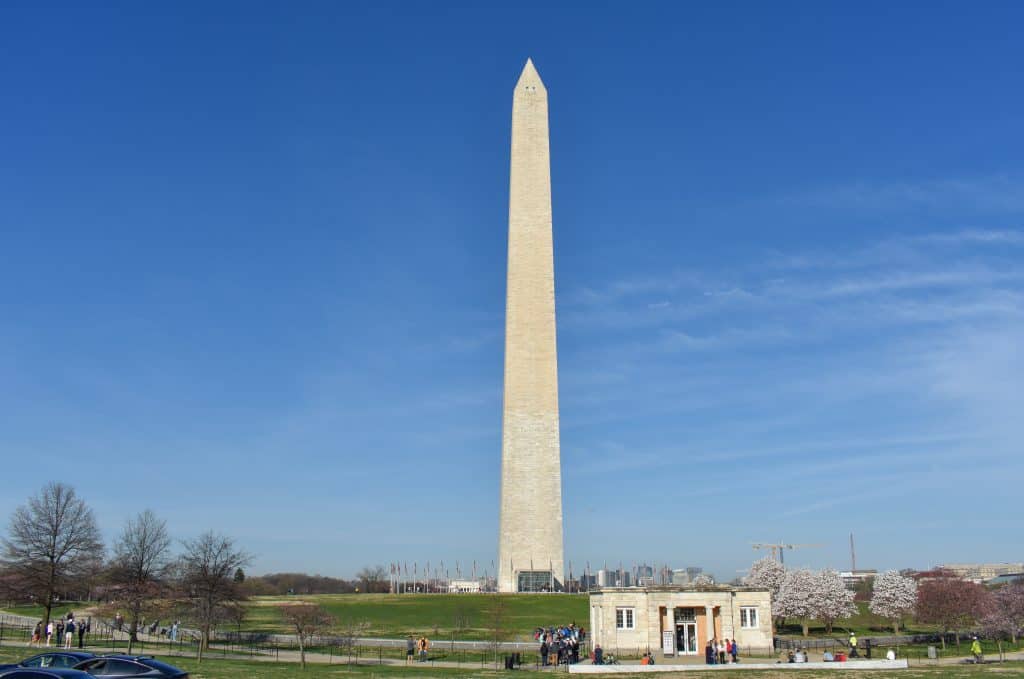
If you have bad luck online, park rangers release tickets onsite at 8:45 AM and it’s ideal to go earlier at 7 AM as lines fill up quickly. Be fast and alert too, because tour companies snatch them up first.
The trick is not to arrive later than 7 AM and wait at the back area of the Washington Monument Bookstore on Google Maps. If you arrive before 8:45 AM and see a sign that says “All tickets are sold out for today,” you’re in the right spot–the sign is frequently from yesterday’s tours.
Washington Monument Tour Times
Washington Monument opens at 9 AM and closes at 5 PM. Arrive on time or early for your designated time slot, as tours only operate in half-hour slots. If you arrive 20 minutes late, you might still be allowed in, but don’t count on it and plan to be on time. The last elevator trip cuts at 4 PM.
If you hate crowding, avoid visiting during weekends and holiday seasons. During summer, aim for early morning or late afternoon to avoid midday heat.
Parking Near the Washington Monument
The closest metro stations are the Smithsonian (Blue, Orange, Silver Lines) and the Federal Triangle. They’re both about a 10-to 15-minute walk to the Washington Monument.
Driving to the Washington Monument is not recommended. Nearby street parking spots are on Constitution Ave and Independence Ave on a first-come, first-served basis, and parking is very difficult. They’re the closest parking to the Washington Monument, but there’s still more at:
- Paddle Boat Parking Lot along Maine Ave
- World War II Memorial
- Ohio Drive SW between Lincoln and Thomas Jefferson Memorials
However, looking for street parking is going to be a long, annoying process and is not recommended.
Another option is the SpotHero app to find good parking spots if you don’t like taking Uber or taxis. Leave restricted items in the car like strollers, large bags, animals, food, and drinks. If you’re not bringing a car, there’s an unofficial stroller parking area at the edge of the plaza circle beside the fence. Finally, when you arrive at the National Mall, be prepared to walk.
Frequently Asked Questions about Visiting the Washington Monument
Can you climb the stairs to the top of the Washington Monument?
No, but the elevator offers access.
Historically, visitors could walk to the top of the Washington Monument through the stairs, but it was closed due to vandalism, unsafe climbing activities, and medical emergencies mid-walk. Today, the only way up is the elevator.
How much does it cost to go up the Washington Monument?
Washington Monument ticket prices are free, but there’s a $1 convenience fee for online reservations.
How long does it take to go up the Washington Monument?
It can take 15-30 minutes to line up, take security checks, and ride the elevator to the top of the Washington Monument. Each elevator ride takes 70 seconds, and you can stay for as long as you want at the top. Most visitors finish the tour in about 45-60 minutes.
How many steps are in the Washington Monument?
Climbing the Washington Monument is 896 steps from the ground level to the observation deck.
Read more on planning your trip to DC
- DC Metro map
- How walkable is DC?
- Top attractions in DC you need reservations for
- Complete guide to visiting the White House
- Can you climb to the top of the Washington Monument?
- Visiting the Air & Space Museum in Washington DC
- Visiting the Udvar-Hazy Air & Space Museum
- All about the Cherry Blossoms in DC
- An art-lover’s DC itinerary
- What state is Washington DC in?






